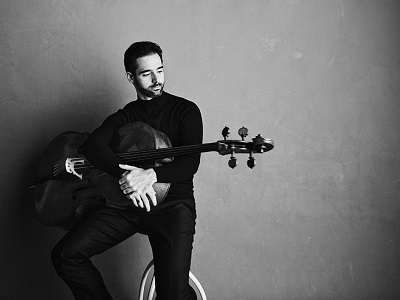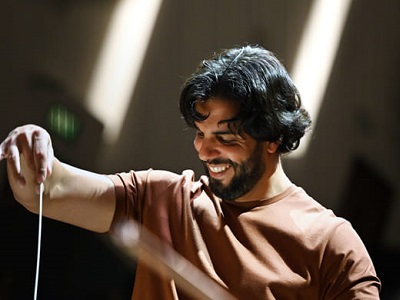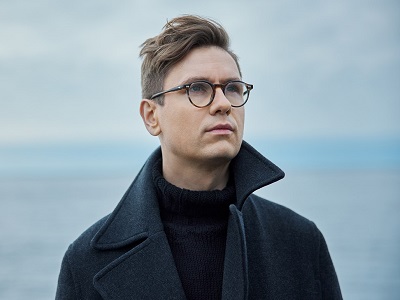 I attended a wonderful concert conducted by Domingo Hindoyan.
I attended a wonderful concert conducted by Domingo Hindoyan.
I need to catch up on some concert going.
 I attended a wonderful concert conducted by Domingo Hindoyan.
I attended a wonderful concert conducted by Domingo Hindoyan.
We started off with a very brisk and somewhat unyielding account of the Overture to Smetana's The Bartered Bride. It reminded me of a production of the work which I saw given by Welsh National Opera many moons ago. The Director decided that we, the audience, needed to realise that life among the Bohemian peasants around the time of the Austro-Prussian War of 1866 wasn't all dancing around in circles dressed in newly laundered white costumes.
The staging was updated to 1950s Soviet era and, while everything that happened on stage was right and proper and told the story exactly, the whole evening was devoid of what Smetana was trying to create - fun, sparkles and smiles. I'd say that the same applied here as well.
I'd bought my ticket for this concert specifically to see what Hindoyan would make of Brahms' Symphony No4 in E minor, one of my most cherished works in the canon. What can I say? The orchestra sounded beautiful. The sections blended and individual contributions made their voices heard. There was a sense of wistful nostalgia with long ago pain remembered, a sense of struggle in the present. It was like overlooking the Cheshire plain from the heights of Alderley Edge - an enormous, widespread landscape set out below brightly lit by sunshine but with passing shadows cast by clouds.
I enjoyed the performance. I was interested, involved.
I wasn't moved. And I can be moved by this piece. I don't know why because all of the right elements were present.
I'd had fewer expectations for Dvořák's Cello Concerto. The last time I'd heard this work at the Phil was in 2017 when Alexey Stadler was an average soloist and Vassily Petrenko was out of his depth with an idiom which he never really got the hang of. This, however, was the jewel of the evening.
Pablo Ferrández is a fabulous cellist. He can come back to the Phil any time he likes. He made his instrument sing, dance, laugh and sigh and he "got" the sense of lost early love and a homeland longed for from afar.
And what is more Hindoyan and the orchestra were right there behind him. All of that sense of a sound which grows organically from one note to the next was present so that the work felt like a living presence in the hall. And what was lacking in the Smetana was here present in abundance. There was a lilt and sway and an occasional snap which paid tribute to the origins of the composition in peasant music.
And I felt moved to tears.
Wonderful. Wonderful music making.
Then, shortly after, we had Mahler's Symphony No5.
 The last time that I attended a performance of Mahler 5 was back in January of 2019 with Robert Trevino conducting. It was dreadful. A brash sound and a brash approach to this most delicately poised symphony.
The last time that I attended a performance of Mahler 5 was back in January of 2019 with Robert Trevino conducting. It was dreadful. A brash sound and a brash approach to this most delicately poised symphony.
The programming for this performance gave us two of Brahms' great choral works to start with - Nänie (Funeral lament) and Schicksalslied (Song of destiny).
The two together are profound meditations on various forms of sorrow.
Hindoyan is so good at the way that he blends choral and orchestral sounds. Despite the mood being so downbeat, there were rousing cheers for the choir under their new director, Matthew Hamilton, and the orchestra as well.
And then we had the symphony which immediately picks up on the dirge and the sorrow and the fear as it embarks on a journey towards love and a joyful resolution - and I would say that those final bars are joyful and not, absolutely not, triumphant. This is not the music of a Nietzschean Übermensch bestriding the universe: it is the music of a tormented man acknowledging his excitement at finding true love.
And Hindoyan understood that in abundance. The whole performance was so poised and beautiful without ever veering into mawkish sentimentality at one end of the scale or a complete nervous breakdown at the other.
And something that Hindoyan understood, which I've only ever seen from one other conductor (Libor Pešek), is that the symphony may start with its focus on the Lead Trumpet but the balance gradually shifts to the Lead French Horn. I'd say that the first two movements are about masculine uncertainties whilst movements three and five offer the balm of all-embracing mutual love with movement four being that hymn in praise of the beloved.
It was a truly outstanding evening of music making - like most others in the Circle, I stood up and cheered at the end.
 When we heard Víkingur Ólafsson at the Phil in January, I'm not sure that any of us expected to hear him in person again quite so soon.
When we heard Víkingur Ólafsson at the Phil in January, I'm not sure that any of us expected to hear him in person again quite so soon.
In the Goldberg Variations, everything that I said then was present in abundance - supreme control combined with utter spontaneity, astonishing control of colour, sonority, timbre, resonance, the whole gamut of the pianist's arsenal, breath-taking technique for speed of articulation, hand distribution and layering textures and sonorities.
But still, it was not a set of study-book exercises. It wasn't one of those rigidly fingered presentations from the 1950s. These were pieces which encompassed joy, uncertainty, bliss, excitement. Some describe the set as transcendental. I can't go that far. I find them quite anchored in the quotidian realm.
If there is any truth in the story about the prodigious young harpsichordist Johann Goldberg playing them to ease his patron (Count Keyserlingk)'s insomnia, then these aren't lullabies but rather a compendium of reflections on thoughts, feelings, duties and actions from everyday life.
Roland doesn't "get" Bach at all. He is still wondering why the music didn't speak to him even though he acknowledges the rapt silence during the performance and the ecstatic reaction at the end. In the circumstances, it was very brave of him to sit still throughout.
 Elsewhere, I attended the encore performance of Jake Heggie's Dead Man Walking in a FACT cinecast from the Metropolitan Opera in New York City. By the end, I felt about as bruised and elated as I did after my first encounter with Janáček's From the House of the Dead forty years' ago. It was an immense achievement by all concerned.
Elsewhere, I attended the encore performance of Jake Heggie's Dead Man Walking in a FACT cinecast from the Metropolitan Opera in New York City. By the end, I felt about as bruised and elated as I did after my first encounter with Janáček's From the House of the Dead forty years' ago. It was an immense achievement by all concerned.
Those midweek matinee shows tend to attract the "silver screen" crowd who are not renowned for their being a fan base of the modern. I've sat through similar presentations with two other people in the past. So, I was pleasantly surprised to be in a studio sized cinema which must have been about a third/half full. And appreciative at the end.
I've wanted to sample this work since I first heard about it in 2000. There was a chance that WNO might have mounted a production in the 2000s but that came to naught. There was then a chance that ENO might have mounted a production in the 2010s but that came to naught as well. I am more than glad that the technology of the cinecasts has enabled me to see this production and offer my insignificant approbation to the general acclaim.
I had managed to pique Roland's curiosity about the work but could not force his attendance. He had hospital duties with Colin to attend to.
Joyce DiDonato and Ryan McKinny led the cast as Sister Helen Prejean and Joseph de Rocher respectively and Susan Graham was outstanding as Mrs Patrick de Rocher. Yannick Nézet-Séguin was a luxury choice to conduct the work. I liked Ivo van Hove's lean and spare production and its use of video for specific reasons (ie showing the crimes so that we never doubted that Joseph de Rocher was actually guilty of rape and murder and showing exactly how the execution by lethal injection was performed). Far from being emotionally distancing, both scenes ratcheted up the audience's emotional investment in the proceedings.
I suggested that Roland should listen to the RLPO's latest recording with Domingo Hindoyan of orchestral pieces from Italian verismo opera. I can't imagine Vassily Petrenko ever achieving that sort of plush, Italianate beauty of sound from his orchestras. Roland was concerned as to how I had managed to find a copy online. I explained that most music personalities or organisations (or their promotional teams or record companies) have online channels which allow you to listen to their music. There is never any indication as to whether or not they have any formal basis. He remains dubious.
Michael in New York went to his first concert of the season and encountered the Hungarian instrument, the cymbalom. It is an oddity - somewhere between a harpsichord and a marimba. Michael contested that he never heard one before but I'm sure that he must have. The crop up all over the place in Hungarian music, such as in the Intermezzo from Zoltán Kodály's Háry János. They are one of the distinctive timbres that make such music sound so, well, Hungarian.